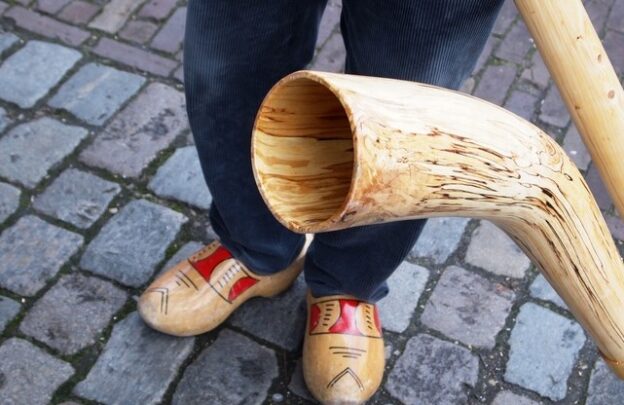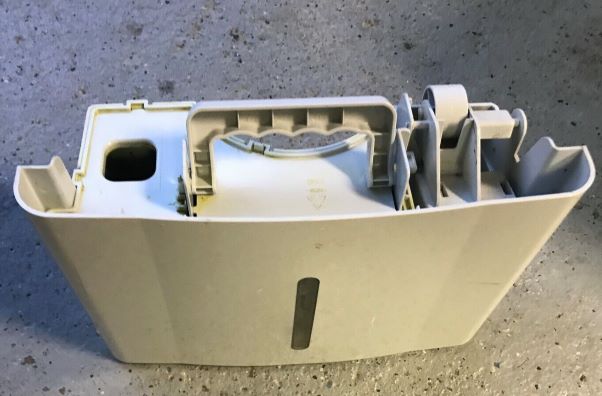Dehumidifier Is Not Draining Through The Hose: Reasons Revealed
Nothing could be more disconcerting than finding your dehumidifier’s bucket overflowing despite a dutifully attached hose.
You do not know what to do, especially as the unit will switch off automatically once the bucket is full. This means you start getting high humidity levels inside the house.
The good thing is that many dehumidifier problems are easy to solve—yes, even when the dehumidifier is not draining through the hose.
Thus, do not toss yours into the trash yet. It still has a lot of life left! Once you identify the main causes of this problem, you are halfway to solving them. They are as below:
- Clogged hose pipe
- Kinked hose pipe
- Poor gravity affects hose drainage
- Submerged hose
- The pump is dying
- Leaking connections
- The sensor is not sensing
1. The hose pipe is clogged

Just like arteries can develop fatty deposits, your dehumidifier’s internal drainage system can accumulate dust, mold, and mineral buildup, creating a formidable roadblock for water.
For dehumidifiers with drain hose, failure to drain the collected water continuously will cause the drain pan to overflow and drain into the bucket.
Solution: Disconnect the hose, empty the bucket, and carefully clean the drain pan and internal pathways with warm water and vinegar. For stubborn clogs, a flexible brush or plumbing snake can come to the rescue.
2. Kinks in the hose prevent proper working
While hoses may not complain about their posture, kinks, and sharp bends can seriously affect the flow of water. The dehumidifier hose is usually thinner than the garden hose, and can form kinks easily.
Imagine trying to drink with a bent straw! Check for any loops or constrictions in the hose and gently straighten it out, ensuring a smooth downward slope towards the drain.
Solution: Reroute the hose to eliminate kinks and maintain a gentle downward incline. Consider replacing a permanently kinked hose to avoid future frustration.
3. There is a gravity problem
Dehumidifiers with drain hoses use gravity to dump the water into the sink or floor drain.
Therefore, gravity can be a serious problem when you are using a Frigidaire dehumidifier, or any other that does not have a built-in pump.
If your hose lacks a downward slope, the water might just sit there because there is no gravity.
Solution: Adjust the hose position to ensure a consistent downward slope from the dehumidifier to the drain point. Elevate the dehumidifier if necessary, or consider using a longer hose with a steeper drop.
4. The hose is submerged in water
If the hose end dips into standing water, like a full drain line, there is likely to be a backflow problem. This traps water inside the dehumidifier. It is almost the same as trying to get the water to flow upwards without pressure.
Solution: Elevate the hose end to prevent it from being submerged. If the drain line is the culprit, clear it or use a separate drain point higher than the hose outlet.
5. The pump is failing
This happens with dehumidifiers with drain pumps due to neglect, poor build quality, and other problems.
If the dehumidifier pump is not working, it will not have enough strength to push water through the hose, leaving it to pool like a forgotten promise.
If the dehumidifier is blowing too hot air, the pump, or compressor, is overworking.
Solution: Unplug the dehumidifier and gently listen for any unusual noises from the dehumidifier pump. Check the user manual for troubleshooting steps or replacement instructions, if necessary.
6. Leaking connection
Leaks can take place at the connection point between the hose and the dehumidifier. A cracked or loose connection can divert water away from its intended path, leaving the hose high and dry (well, mostly dry).
Solution: Inspect the connection for cracks or loose fittings. Tighten the connector if necessary, or replace the damaged parts. Consider using waterproof sealing tape for extra security.
7. The sensor is not sensing
Some dehumidifiers have sensors that detect when the drain pan is full and turn off the unit.
If this sensor malfunctions, it might mistakenly think the pan is full even when the hose is clear, leading to premature shutdowns and a full bucket.
Solution: Check the user manual for specific instructions on cleaning and resetting the sensor. If the problem persists, professional help might be required.
Should I remove the dehumidifier bucket when using a drain hose?
Generally, no. The bucket acts as a backup in case the hose becomes clogged or disconnected.
However, if you’re confident in your hose setup and know you won’t experience power outages that could disrupt drainage, removing the bucket can improve airflow and efficiency.
Just remember to replace it during maintenance or in the event of unexpected issues. It is also a good idea to clean the dehumidifier bucket to keep it free of mold.
Conclusion
A dehumidifier bucket filling when the hose is attached can be challenging, but don’t let it dampen your spirits!
Home appliances go wrong from time to time, and you may experience problems such as the dehumidifier blowing cold air, Midea dehumidifier not collecting water, and many others.
And now, as you have seen here, a dehumidifier might fail to drain water through the hose and fill the bucket.
I have shown you the potential culprits and their solutions, and you can restore your humidity fighter’s power.
Remember to give your unit the recommended care and maintenance to keep it running smoothly and lower your indoor humidity.

